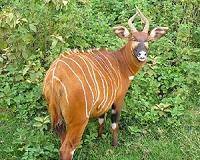| . |  |
. |
Munster, Germany (SPX) Jul 30, 2010 Debates have raged for decades about how to arrange the Australian and South American branches of the marsupial family tree. While marsupials like the Australian tammar wallaby and the South American opossum seem to be quite different, research by Maria Nilsson and colleagues at the University of Munster, soon to be published in the online open access journal PLoS Biology, shows otherwise. Using sequences of a kind of "jumping gene," the team has reconstructed the marsupial family to reveal that all living Australian marsupials have one ancient origin in South America. This required a simple migration scenario whereby theoretically only one group of ancestral South American marsupials migrated across Antarctica to Australia. Previous studies theorize that marsupials originated in Australia and that some lineages might have been split when the landmasses separated 80 million years ago. There are few ancient marsupial fossils found in South America or Australia, and previous genetic studies based on nuclear and mitochondrial genes have revealed contradictory results about which lineages are most closely related and which split off first. Nilsson, Jurgen Schmitz, and colleagues screened the genomes of the South American opossum and the Australian tammar wallaby, as well as the DNA of 20 other marsupial species, including the wallaroo, the common wombat, and the marsupial mole for retroposons. Retroposons are unlikely to independently arise in both these species in exactly the same part of the genome by chance and can be used as unambiguous phylogenetic markers. Thus, the overwhelming likelihood is that retroposons shared between species are derived from a long-lost ancestor. Today's Australian marsupials appear to have branched off from a South American ancestor to form all currently known marsupials-kangaroos, the rodent-like bandicoots, and the Tasmanian devil. It is still a mystery how the two distinct Australian and South American branches of marsupials separated so cleanly, but perhaps future studies can shed light on how this occurred.
Share This Article With Planet Earth
Related Links University of Munster Darwin Today At TerraDaily.com
 World's 103 wild mountain antelopes face extinction: Kenya
World's 103 wild mountain antelopes face extinction: KenyaNairobi (AFP) July 29, 2010 Wildlife officials in Kenya warned Thursday that an antelope species, whose entire global wild population of 103 exists only in the east African country, was on the verge of extinction. Habitat loss, genetic factors, predation and disease were threatening to wipe out the mountain bongo (Tragelaphus eurycerus isaaci), the Kenya Wildlife Service (KWS) said in a statement. The elusive mount ... read more |
|
| The content herein, unless otherwise known to be public domain, are Copyright 1995-2010 - SpaceDaily. AFP and UPI Wire Stories are copyright Agence France-Presse and United Press International. ESA Portal Reports are copyright European Space Agency. All NASA sourced material is public domain. Additional copyrights may apply in whole or part to other bona fide parties. Advertising does not imply endorsement,agreement or approval of any opinions, statements or information provided by SpaceDaily on any Web page published or hosted by SpaceDaily. Privacy Statement |